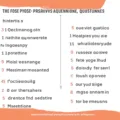The Sense of Coherence (SOC) Scale is a psychological tool designed to measure how people perceive life and its various stressors. Developed by Aaron Antonovsky, the SOC-13 is a shorter version of the original 29-item scale. This scale assesses three components: comprehensibility, manageability, and meaningfulness. Understanding the SOC-13 can offer insights into mental health, resilience, and overall well-being.
What is the Sense of Coherence Scale?
The Sense of Coherence Scale is a measure of an individual’s ability to view life as comprehensible, manageable, and meaningful. These three components help determine how well a person can cope with stress and maintain psychological health. The SOC-13, specifically, is a concise 13-item version of the original scale, making it more practical for various settings, including research and clinical practice.
Components of the SOC-13
The SOC-13 scale evaluates three primary components:
- Comprehensibility: This assesses the extent to which individuals perceive the world as logical, ordered, and consistent.
- Manageability: This measures the degree to which individuals feel they have the resources to meet the demands posed by life’s challenges.
- Meaningfulness: This evaluates the extent to which individuals feel that life makes sense emotionally and that challenges are worthy of investment and engagement.
How is the SOC-13 Administered?
The SOC-13 is typically administered through a self-report questionnaire. Respondents rate their agreement with each of the 13 items on a Likert scale, usually ranging from 1 (very seldom or never) to 7 (very often or always). The responses are then scored to provide an overall sense of coherence score, which can be used to assess an individual’s overall sense of coherence and capacity to handle stress.
Benefits of Using the SOC-13
The SOC-13 has several advantages:
- Efficiency: The 13-item scale is quick to administer, making it suitable for both research and clinical settings.
- Comprehensive Insight: Despite its brevity, the SOC-13 provides a robust measure of the three core components of coherence.
- Versatility: It can be used across diverse populations and cultural contexts.
- Predictive Value: High SOC scores are often associated with better mental health outcomes and greater resilience against stress.
Applications in Mental Health
The SOC-13 is widely used in mental health research and practice. It helps clinicians and researchers understand how individuals perceive and manage stress, which can inform interventions and therapeutic approaches. A high sense of coherence is linked to better mental health, lower levels of depression and anxiety, and overall well-being.
FAQ
1. What does the SOC-13 measure?
The SOC-13 measures an individual’s sense of coherence, which includes comprehensibility, manageability, and meaningfulness.
2. Who developed the Sense of Coherence Scale?
The SOC Scale was developed by Aaron Antonovsky, a medical sociologist known for his work on stress and health.
3. How is the SOC-13 different from the original SOC-29?
The SOC-13 is a shorter, 13-item version of the original 29-item scale, making it more practical for quick assessment.
4. Can the SOC-13 be used in different cultural contexts?
Yes, the SOC-13 has been validated across various cultural contexts and is considered versatile for international research and practice.
5. How does a high SOC score benefit mental health?
Individuals with a high SOC score tend to have better mental health, greater resilience against stress, and a stronger sense of well-being.









